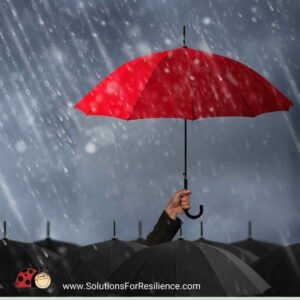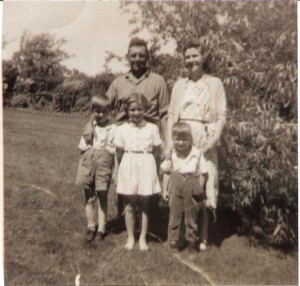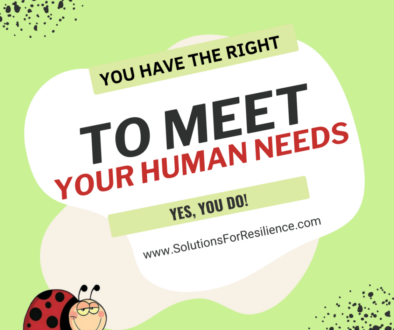How to Boost Your Resilience: Assess Your Protective Factors

Many of us have moved from saying “Woe is me” to “WOW! I survived and I am even thriving.” We could ask ourselves, “Where did my resiliency develop? And if it did not develop in childhood, when did it develop?” If you do not identify yourself as being resilient to challenges, you may not recognize your capacity to handle strain and stress. Perhaps it is time to explore building resilience and the concept of protective factors.
Here is one definition of resilience:
The maintenance of healthy ⁄ successful functioning or adaptation within the context of a significant adversity or threat.
Source: Garmezy, N. (1993). Risk and resilience. In D. C. Funder, R. D. Parke, C. Tomlinson-Keasey & K. Widaman (Eds.), Studying lives through time: Personality and development (pp. 377–398). Washington, DC: American Psychological Association
On this website, there are many articles on how to strengthen resilience. But here we will provide a connection between what happened to you in your childhood and what you can do to move forward. This will better allow you to use the other available articles with tips for strengthening your buoyancy.

Emmy Werner, Steven J. Wolin, Wayne Hammond, and Michael Unger, and other resiliency researchers discovered protective factors that helped children and youth better manage their life-long challenges. The lists include protective factors that are described in the emotional intelligence, positive psychology, sociology and philosophy literature.
Importance of Protective Factors
- Enhancing Resilience: Protective factors are characteristics, skills, or resources that mitigate the negative effects of stressors and challenges. They enhance an individual’s capacity to cope, recover, and bounce back from difficult situations, promoting overall resilience.
- Balancing Risk Factors: Protective factors act as counterbalances to these risks, helping individuals maintain mental and emotional well-being.
- Promoting Positive Outcomes: In the face of adversity, individuals with strong protective factors are more likely to experience positive outcomes. These outcomes can include psychological well-being, personal growth, improved problem-solving skills, and the ability to maintain healthy relationships.
- Developmental Perspective: Protective factors may vary in importance across these stages, as individuals face unique challenges and opportunities for growth.
- Prevention and Intervention: Understanding protective factors can inform prevention and intervention strategies. By identifying and promoting these factors, researchers and practitioners can create programs and interventions that enhance resilience and reduce vulnerability to mental health issues.
- Holistic Approach: Resilience is a multidimensional concept that involves psychological, social, and environmental factors. Protective factors contribute to a holistic approach to well-being, recognizing the complex interplay between various aspects of an individual’s life.
- Cultural Considerations: Different cultures and communities may prioritize different protective factors based on their values, norms, and resources.
- Long-Term Impact: Building strong protective factors early in life can have a lasting impact. Children and adolescents who develop coping skills, a sense of purpose, and positive social connections are more likely to carry these attributes into adulthood.
- Personal Empowerment: Identifying and fostering protective factors empowers individuals to take an active role in their own well-being. This awareness can lead to proactive efforts to strengthen resilience, making it an essential aspect of mental health promotion.
Understanding and promoting protective factors have significant implications for mental health, well-being, and the development of effective interventions.
Protective factors include internal, which refers to what an individual has control over, and external, which refers to the influence of our environment. We were all affected by our childhoods in different ways. A child with a strong internal protective factor (tough constitution), regardless of a chaotic home life, may be able to heal, and go on to thrive. Those of us with weaker internal factors would have been more impacted by our parents, siblings, school, neighborhood and community. Often times a grandparent or a neighbor kept watch over us and provided some external protective factors.
Only you can decide how these internal and external factors played out. Regardless, we can always strengthen our resiliency. Assessing our childhood protective factors is one way to become aware of how we might repair, build or sustain our resilience.
Round One:
1. Take an inventory of your overall childhood using the categories below. Give each point a number from 0 (not at all) to 10 (got all I needed and more).
Internal Protective Factors
- Physical health
- Problem-solving ability
- Effective and appropriate action/ behavior
- Communication skills
- Self-compassion
- Ability to defend self
- Flexibility
- Took myself lightly
- Time to play
- Sense of achievement or accomplishment
- Meaningful contribution
External Protective Factors
Family:
- Felt close to family members
- Loved unconditionally by parent(s)
- Caring extended family
- Basic needs met—food, shelter, and clothing
- Safe from family violence, addictions or other mal-adaptive behaviors
- Clear rules, routines and boundaries for structure
- Guidance and consistency
- Encouragement of dreams and talents
- Appreciation for contribution
Community:
- Love of learning, discover and teamwork instilled at school (work)
- Positive faith experience
- Close friendships
- Inspiring role models
- Group opportunities (camp, lessons)
- Opportunities to contribute
- Consistent child-care
2. Flag the protective factors from your childhood which you scored 5 or under.
Round Two:
Go through the above list again reflecting on your life today. Give a number 0 (not at all) to 10 (have all I need and more).
Flag:
a) Note the protective factors you have repaired from your childhood–the ones that were missing back then. Congratulate yourself for attending to your needs.
b) Note the protective factors that still need a repair.
c) Note ONE protective factor on which you can take action to repair today.
Now that you have taken an inventory of what needs strengthening for your resiliency, do something about it.
- Do something different.
- Write down a plan.
- Make a phone call to someone you trust to listen with compassion.
- Ask for help. It is not weak to ask for help. It is a demonstration of strength of character and self-worth.
Congratulate yourself for assessing your protective factors. Now attend to your needs! Let us know how you do. Ok?




January 11, 2021 @ 12:16 pm
Dear Patricia,
I enjoyed reading this post after being referred here by my life-career coach in BC, Canada. Whenever there is a test to do or scores to give, I’m in! Interestingly enough, or not, my adulthood scores were lower than my childhood scores….Not sure how to look at that, I guess there is work to do 😉
Looking forward to discussing this during my next session.
Thank you for your work! Igna
January 19, 2021 @ 1:39 pm
Hi Igna,
You sound like an interesting person. I don’t know many people who are eager to take quizzes and tests. Good on you. I hope you saw the Score Your Resilience Quiz on the Home page of https://www.solutionsforresilience.com. For a number of years both the Canadian Mental Health Association and Veterans Canada used it.
Thank you for your acknowledging comment. Let me know if you would like a complimentary Zoom chat with me.